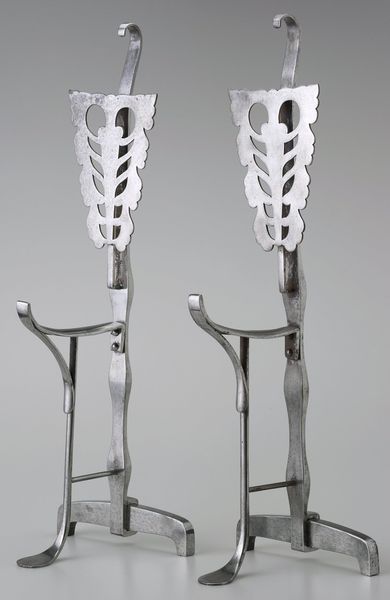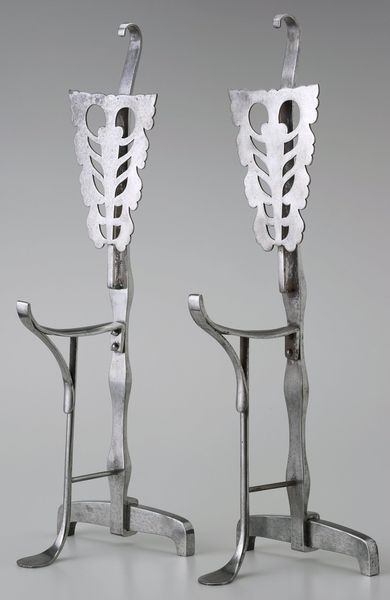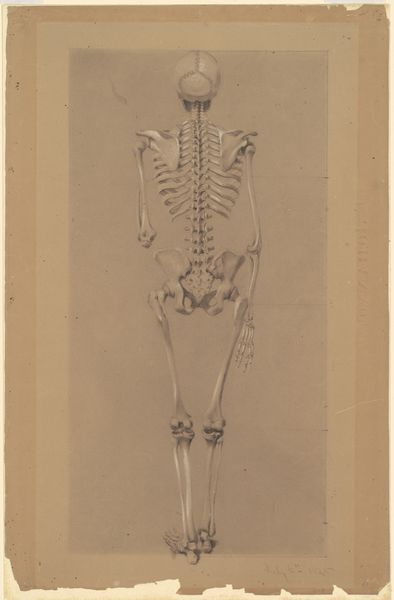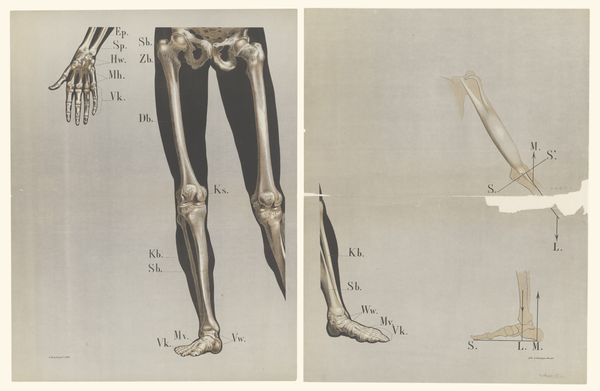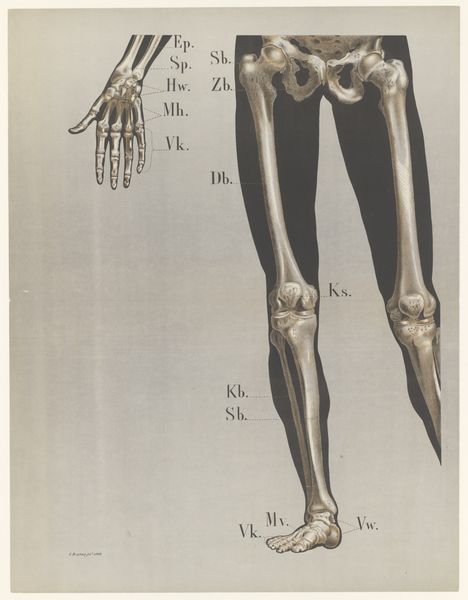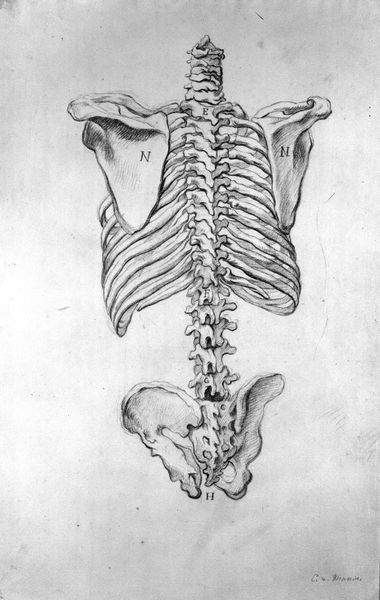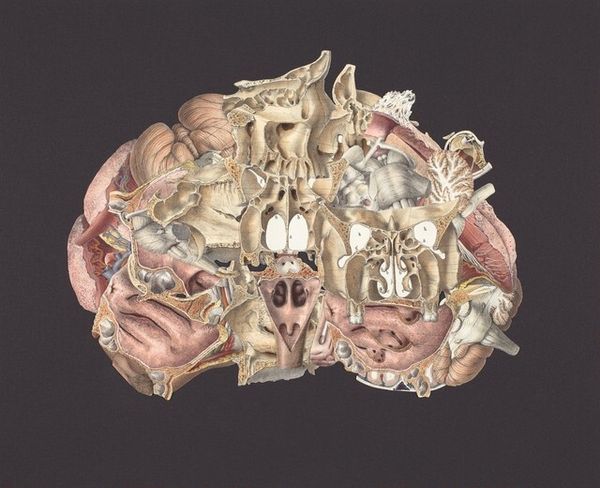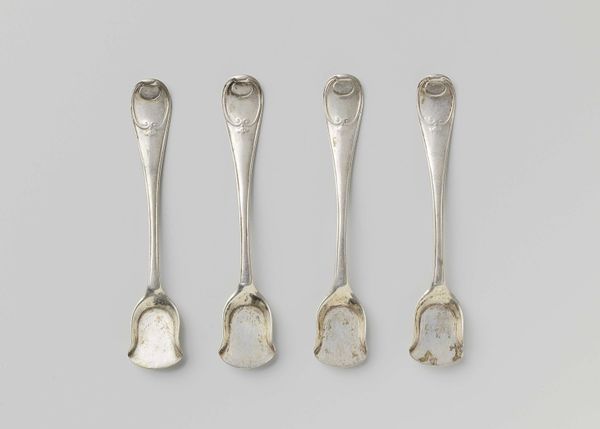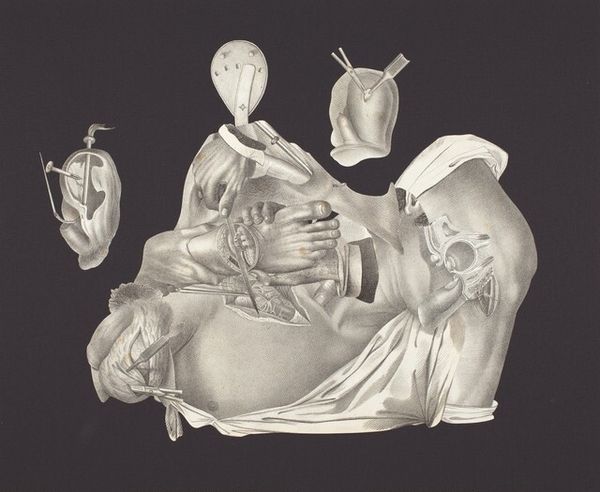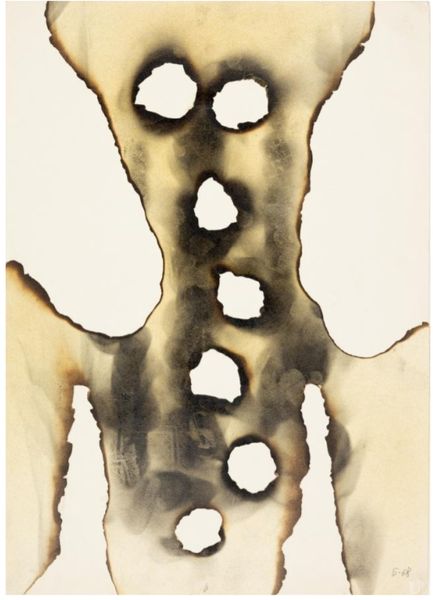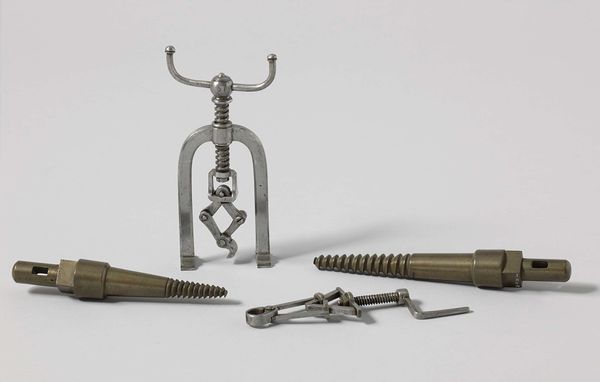
drawing, print
#
portrait
#
drawing
# print
#
sculpture
#
form
#
line
#
academic-art
Dimensions: sheet: 42.5 x 48.2 cm (16 3/4 x 19 in.) support: 55.6 x 61.7 cm (21 7/8 x 24 5/16 in.)
Copyright: National Gallery of Art: CC0 1.0
Curator: Welcome. We're standing before an untitled piece from 1993 by Frederick Sommer, a work that straddles the line between drawing and print. Editor: It's... striking. Almost clinical. The stark black background really throws those anatomical forms into high relief. They’re meticulously rendered; the linear quality, incredibly precise. Is this academic art, in a way? Curator: In some sense. Sommer repurposes that impulse to dissect and document the body, which connects to traditions of both scientific illustration and, more darkly, memento mori. The body becomes a landscape. Consider the cultural baggage anatomy carries. We look, but do we see only the objective? Editor: But it is hard to not see only what is, undeniably, here. The spinal structures dominate the composition, bisected to expose intricate interiors. A play with symmetry and asymmetry, with some shapes reflected perfectly and others deviating. Curator: And those forms whisper to us. This kind of exacting detail also speaks of deeper symbolism - what cultural connotations might we see at play here? The spine, of course, represents structure, support, life force… Editor: I'm drawn to the interplay of textures and shades. The bone and tissue, contrasted so vividly. The lines, sometimes fluid, sometimes sharply defined, give an almost sculptural presence on a two-dimensional plane. It’s anatomical sculpture through rendering. Curator: Precisely, the lines act like memory itself, simultaneously forming, reforming, degrading over time... And do those forms suggest life, or death? Are they simply specimens? Or, rather, are they potent symbols of fragility, strength, and perhaps even resilience, within our own bodies? Editor: Well, looking again, that subtle use of light – it does soften the clinical feel a bit, and nudges the eye. Perhaps you're right. Maybe it’s an acceptance of a full picture—the human body not simply reduced to component forms but integrated with an evocative, emotional context, too. Curator: See how art can unearth connections within, as well? That which seems austere holds the spark to reveal meaning layered below... Editor: Indeed, it challenges our own perceptions of our bodies and of art itself, making it worth stopping for.
Comments
No comments
Be the first to comment and join the conversation on the ultimate creative platform.
